How And When To Low Stress Train Cannabis Plants
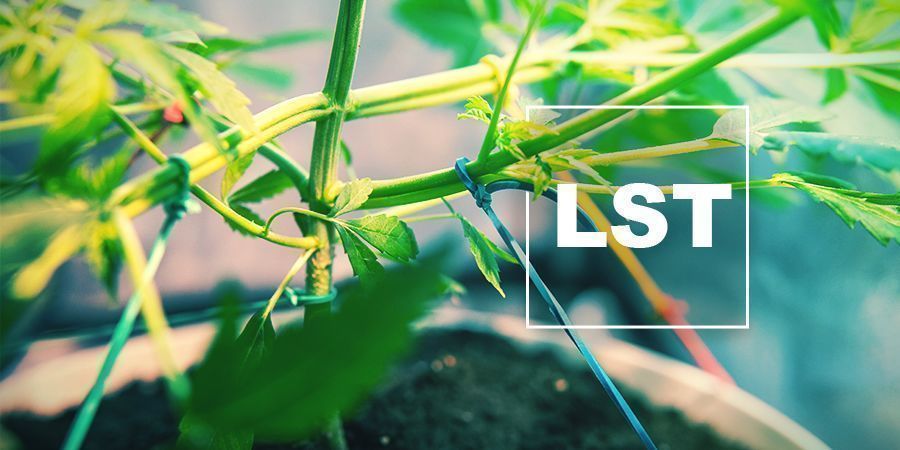
Low stress training, or LST, is a training method that involves bending and tying stems and branches to encourage more efficient and productive growth from cannabis plants. Here's how to do it.
Low stress training is a simple, low-impact approach to improving yields in virtually all types of cannabis plants. In this guide, we'll cover everything you need to know about the technique, including a step-by-step guide and which strains benefit the most from some gentle persuasion.
What Is Low Stress Training (LST)?
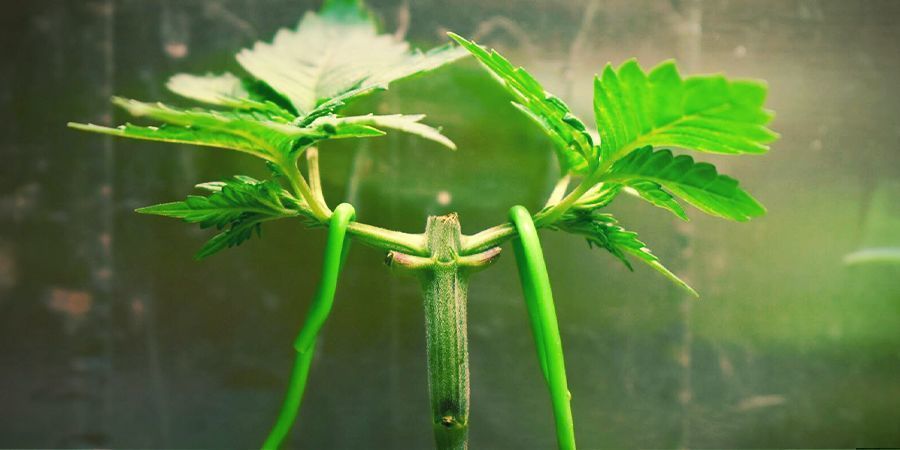
The art of low stress training (LST for short) is a straightforward concept. By carefully bending and tying cannabis plants, we can increase light exposure to bud sites that would usually be shrouded in darkness.
Left to their own devices, cannabis plants typically develop a large central cola, with the overall plant structure and shape reminiscent of a Christmas tree. This apical dominance won't do your plants any harm, but if we manipulate the canopy, flattening it out, the rewards are significant.
The goal of LST is to create a flat and uniform canopy, so, instead of one large central cola, we have multiple viable bud sites. And, of course, with numerous bud sites comes a reward every grower wants—bigger yields!
Advantages and Disadvantages of LST
Like anything in life, there are upsides and drawbacks to implementing LST. However, you’ll be happy to know that the pros vastly outweigh the cons.
Advantages |
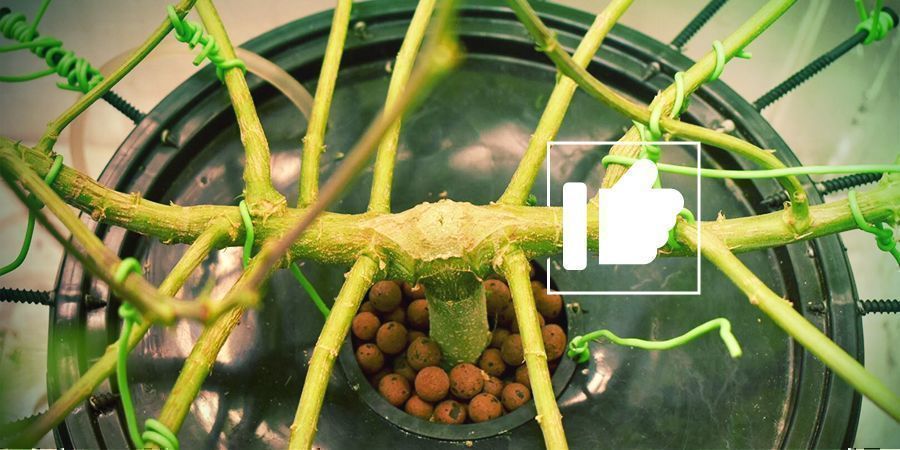
-
LST takes very little practice to master
With only a handful of materials needed to implement LST, it really is as simple as it sounds. As long as you're willing to put in the time adjusting your canopy as you go, it couldn't be easier. Low stress training is an incredibly beginner-friendly technique.
-
Improves yields
By exposing more of your canopy to light, there is only one outcome—more buds. Better yields not only means more bang for your buck, but a bigger stash to enjoy.
-
Doesn't harm cannabis plants
There's no cutting, pinching, stripping, or any other kind of harmful activity involved in LST. All we are doing is guiding the plant to reach its full potential. If the thought of topping your plants is too much to bear, LST is the technique for you.
-
Works with feminized and autoflowering strains
We'll cover this benefit in more detail shortly, but LST works with virtually all types of cannabis. And, even though autos are on a race against the clock to flower, there are still plenty of advantages to employing LST.
Disadvantages |
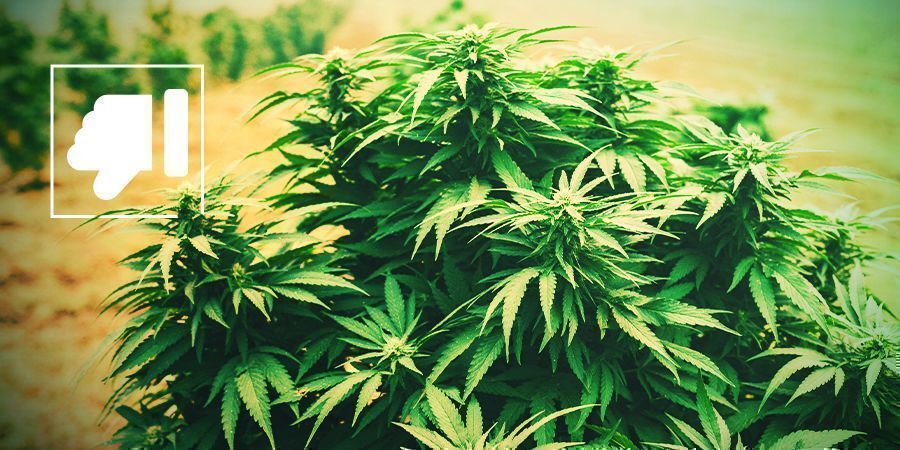
-
LST requires constant maintenance
Although there is a complete lack of topping and chopping, LST does require continuous supervision. For best results, you'll need to check in on plants at least twice a week. If you plan to grow cannabis with minimal interference, LST isn't ideal.
-
Small risk of breaking stems
Cannabis plants are incredibly versatile, and by all accounts can take a fair amount of abuse. That doesn't mean that they're indestructible. Snapping stems and branches during LST is entirely possible, with the risk increasing the older a plant gets.
-
Not suitable for large outdoor cannabis gardens
The bigger the plant, the more training you'll have to do. When you consider most plants need adjusting several times a week, that's an incredible degree of manual labour for a moderately sized outdoor grow.
Is There a Difference Between LST and HST?
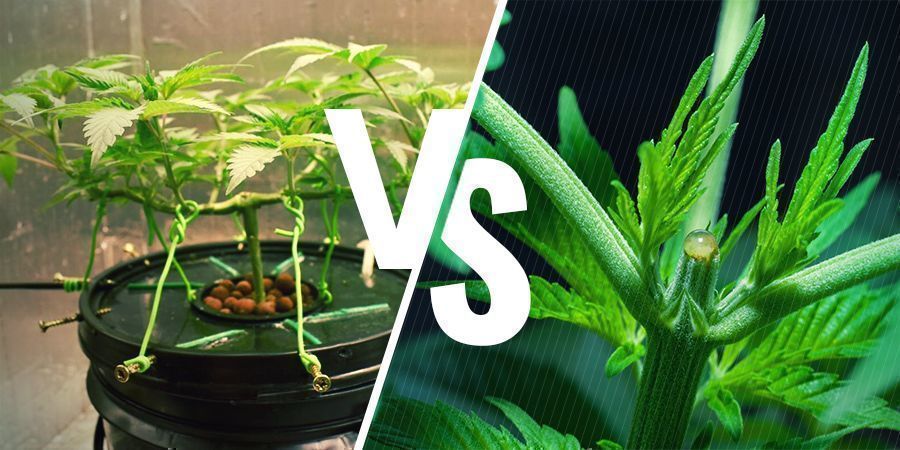
As the title suggests, LST is about putting cannabis plants through the least amount of stress possible, while still influencing how they develop. High stress training, on the other hand, includes topping, mainlining, and FIM trimming to achieve the same result.
The main difference with HST is that it involves removing leaves, stems, or entire sections of a cannabis plant to force it to grow in a specific way. These processes put plants through significantly more stress, and if not done correctly and at the right time, can end up doing more harm than good. That being said, HST will push the potential of your plants to the limit, producing yields beyond that of LST.
While it is entirely possible to combine HST and LST techniques, most growers feel far more comfortable taking the low stress option. However, if we had to recommend at least one HST technique to pair with LST, it would be topping. Topping supports our quest to break apical dominance, and only needs to be done once. Refer to step 2 of our LST guide below to find out when you should start topping.
How to Do Low Stress Training
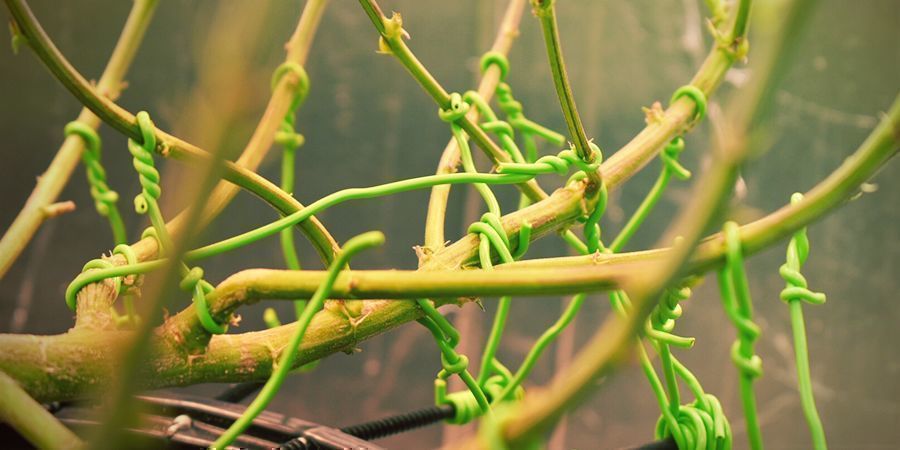
With the advantages of low stress training clear to see, it's time to explain how and when you should start training your cannabis plants. Fortunately, very few materials are needed, and those that are you'll easily find at local garden centres or online.
When to Start and Stop LST?
The earlier you start to LST your cannabis plants, the better. Provided plants have comfortably reached the vegetative stage (roughly 5–6 nodes), you can begin tying down the relevant stems and branches.
If, however, you choose to start LST during flowering, know that plants aren't as receptive to manipulation. Stems are usually much thicker and stiffer, which makes bending them into shape not only more difficult, but much riskier too.
Finally, don't feel left out if you're growing outdoors. LST, despite being labour intensive, is still perfectly suitable for outdoor cannabis plants. In fact, it's an excellent technique to use if you live in colder climates. By flattening the canopy early, you maximise your plant's exposure to the sun—no matter how fleeting it may be.
Equipment
- Shears
- Small hand drill
- Soft plant ties
- Bamboo stakes (optional)
Directions
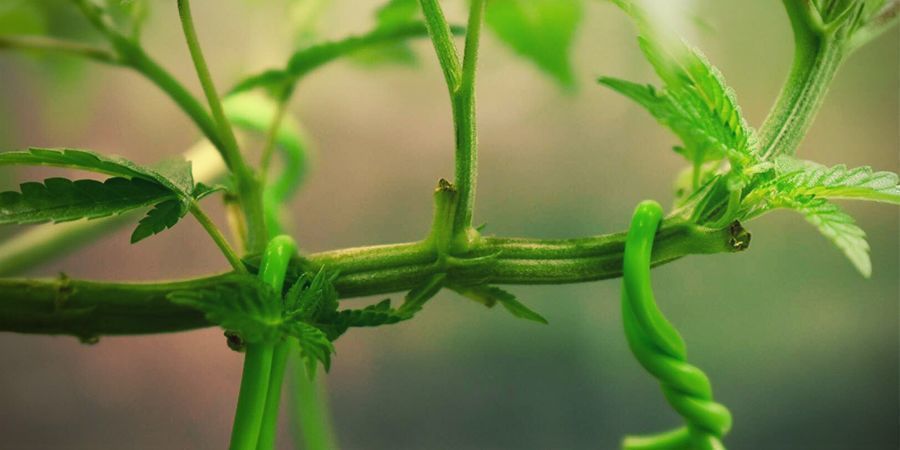
-
Before touching your cannabis plants, the first step is preparing your pot/container. To tie shoots down effectively, you're going to need an anchor point. Use the small hand drill to make several evenly spaced holes around the rim of your pot.
-
Gently bend the plant's main stem towards the edge of the pot (so the top of the plant is nearly parallel with your substrate). Secure the stem in place using the soft plant ties and the newly drilled holes.
Tip: When you tie the stem (and any future branch for that matter), ensure you opt for soft plant ties over rope or regular plastic cable ties. The latter will damage plants as they grow.
If you want to adopt HST techniques, now is the time. You want to top plants down to the 5th or 6th node so your cannabis plant will focus essential resources on two growths rather than just the one. After topping, as the two main branches begin to develop, secure them like you would have done the main stem.
-
Shaping the rest of your plant isn't an exact science as there's no telling how fast a strain will grow and how it'll develop. But, as new shoots and branches develop, you want to continue tying them down towards the edge of the pot.
Tip: The aim is to ensure an even and flat canopy. So, as one branch stretches out above the others, adjust your plant ties to bring it back in line. Your cannabis should start to take on a star or spider shape when viewed from above.
-
Continue checking on the progress of your LST every couple of days and adjusting plant ties accordingly. Once the canopy is established, you'll want to maintain it all the way to harvest. Also, don't neglect to prune, giving priority to the areas around the buds. To make the most of LST, we want all buds sites to get as much light as possible.
Tip: Although bamboo stakes are optional, they're great for supporting your plants, especially as the canopy gets larger. If the main branches start to sag, reinforce them with bamboo using any surplus garden ties.
Picking the Right Strain for Low Stress Training
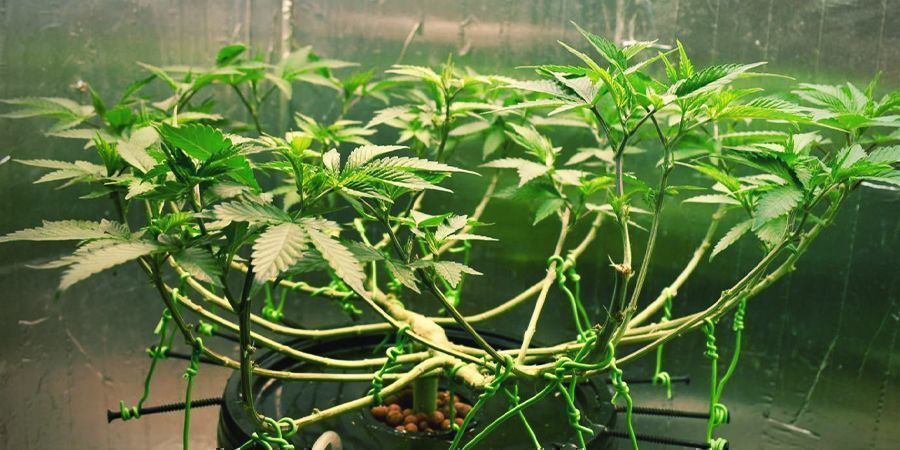
In truth, any strain can benefit from LST. Of course, the degree to which low stress training "improves" yields depends on the plant's genetics, how well other factors are balanced (light, nutrients, etc.), and, most importantly, overall plant health.
While low stress training is, as it implies, "low stress", it isn't entirely stress-free. Before you even consider bending and shaping plants, ensure they are healthy and free of any deficiencies or pests. The main priority is getting plants firing on all cylinders. Once they are, then you can start to push their potential via LST—or any training method for that matter.
It also helps to pick genetically stable strains with well-established attributes. If you're looking for recommendations, the three strains outlined below all respond incredibly well to LST.
Amnesia Haze: This tried and true classic is hardy, robust, and more than capable of handling LST. Her sativa-dominant genetics encourage a surge in growth during flowering, so if space is tight, what better way to control this feisty cup winner than with plant ties and our dedicated guide?
Super Silver Haze: Another established member of the Haze clan, Super Silver Haze blends all the best parts of well-known strains to deliver abundant yields and stable genetics. In fact, it's SSH's love for growing that makes LST an invaluable ally. Get started early, and the reward is a motherload of buds!
Northern Lights Automatic: We couldn't finish our recommendations without highlighting a worthy autoflowering candidate. Ready in a mere nine weeks, you'll have to be quick to get her branches tied down; but, with the right focus, she'll deliver a hefty haul of stoney buds. Not bad for a few months' work!
LST for Autoflowers
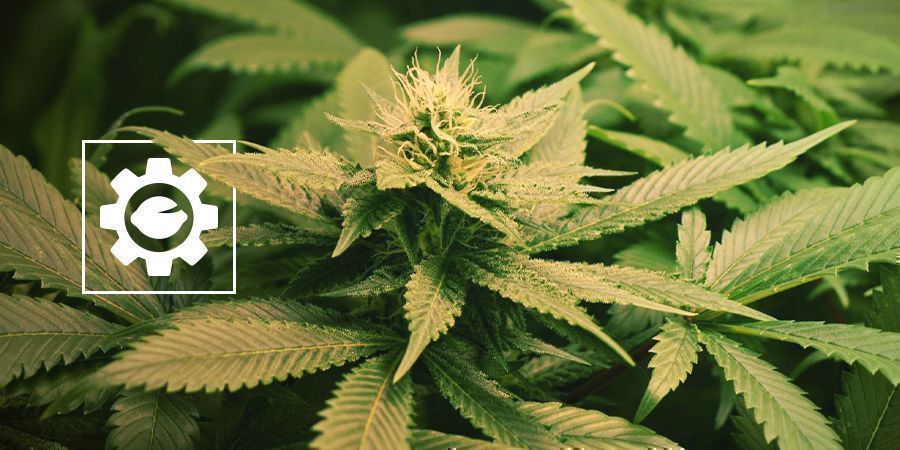
Until now, we've focused largely on photoperiod feminized strains. With direct control over when they flower, it's possible to create some truly impressive canopies using LST. However, that doesn't mean autos are a complete write-off.
Just like their feminized counterparts, autoflowering strains can benefit from the yield-boosting properties of low stress training. There are just a few considerations you need to keep in mind:
-
Some growers use LST and topping to maximise the development of several colas. This isn't recommended for autos as they simply don't have enough time to recover. Autoflowers only have a few weeks to develop buds, and any time spent recovering from the stress of topping will significantly impact yields.
-
You'll have to be quick and start LST as soon as plants are strong enough to handle bending without snapping. Autos have a much shorter overall life cycle, so you don't have long to act. However, just like you would with a photoperiod variant, ensure your autos are healthy and robust before you start bending and shaping.
-
The shorter life cycle also means you'll need to keep a closer eye on plants, adjusting ties and positioning more frequently to maximise results. It's best to check up on your plants every other day, altering the shape as necessary. Remember, even the smallest tweak could make for better light exposure and bigger buds.
Final Tips for Low Stress Training
With the basics of low stress training covered, it's time to point out some essential final tips. These won't change the fundamental process outlined above, but will offer additional insight if you get stuck.
1. Repairing Broken Branches
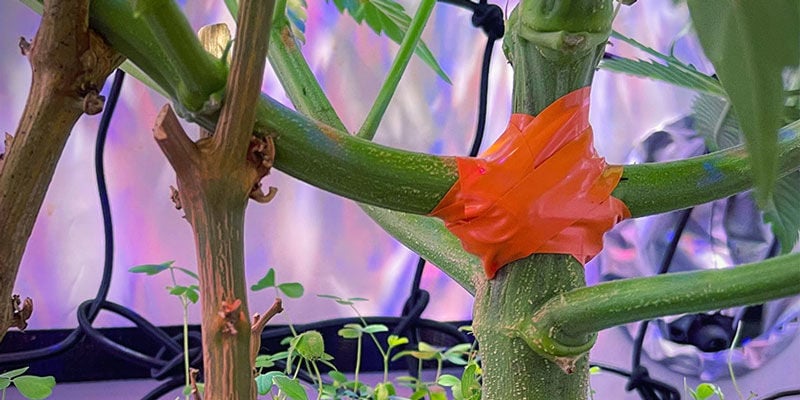
Should the worst happen and one of your beloved stems/branches snap—don't panic! Young cannabis plants are incredibly resilient, and even a snapped branch can bounce back. As long as the branch is still attached, you can repair it using duct tape and a small splint. Make sure you carefully bandage the damaged appendage, and in a week or so it should be good as new.
2. Topping and ScrOG
To force a cannabis plant to develop several impressive colas, you'll need to top plants during step 2 of our LST guide. By topping plants once they reach 5–6 nodes, you'll encourage growth hormone into the top branches, not just the main stem. This, of course, requires a combination of LST and HST techniques, so plants will need longer to recover fully. LST also synergises incredibly well with ScrOG, a training method that utilises a horizontal mesh screen to control the shape of the canopy.
3. Start LST Early
For best results, always bend stems when they are young and flexible. Although branches get stronger as plants get older, they're also less malleable and more prone to snapping should you try and force them into position. Be gentle and start low stress training early for best results.
4. Tie Securely
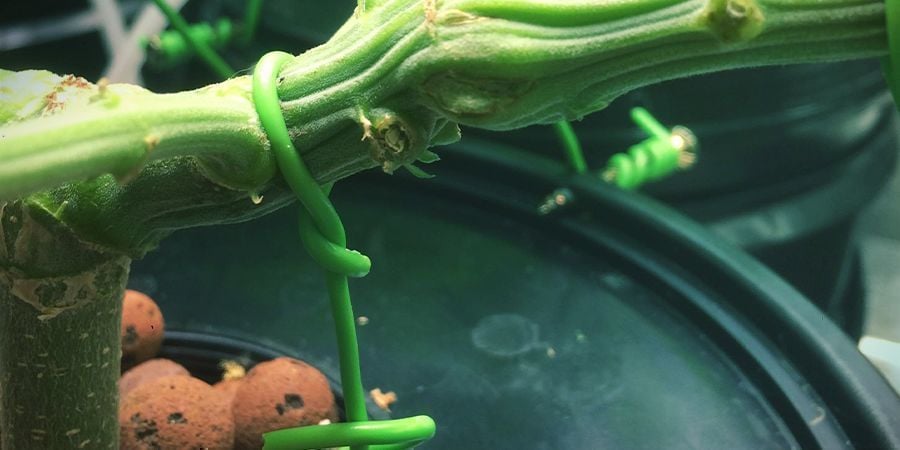
Soft plant ties are perfect for protecting vulnerable plant stems while also keeping them secure. But, you mustn't try to shield plants by tying loosely. Plants will move as they grow, and loose plant ties can rub and damage them. Keep branches strapped down, and stick to making regular, purposeful adjustments.
5. Pick Your Anchor Carefully
Although it may be tempting (and in some cases convenient) to tie your plants to objects around the grow room or tent—don't. You will need to tend, monitor, and maintain cannabis plants throughout their development. The best approach is to keep your plants anchored using the pots they are already in; then you're free to move plants about without disturbing the trained branches.
6. Try Safety Pins
Don't worry if you're not using plastic pots; you can still LST your cannabis plants! If you have fabric or smart-style pots, just use a safety pin instead. Pierce the edge of the pot, then secure the garden ties directly to the pin—simple.














 United States
United States










